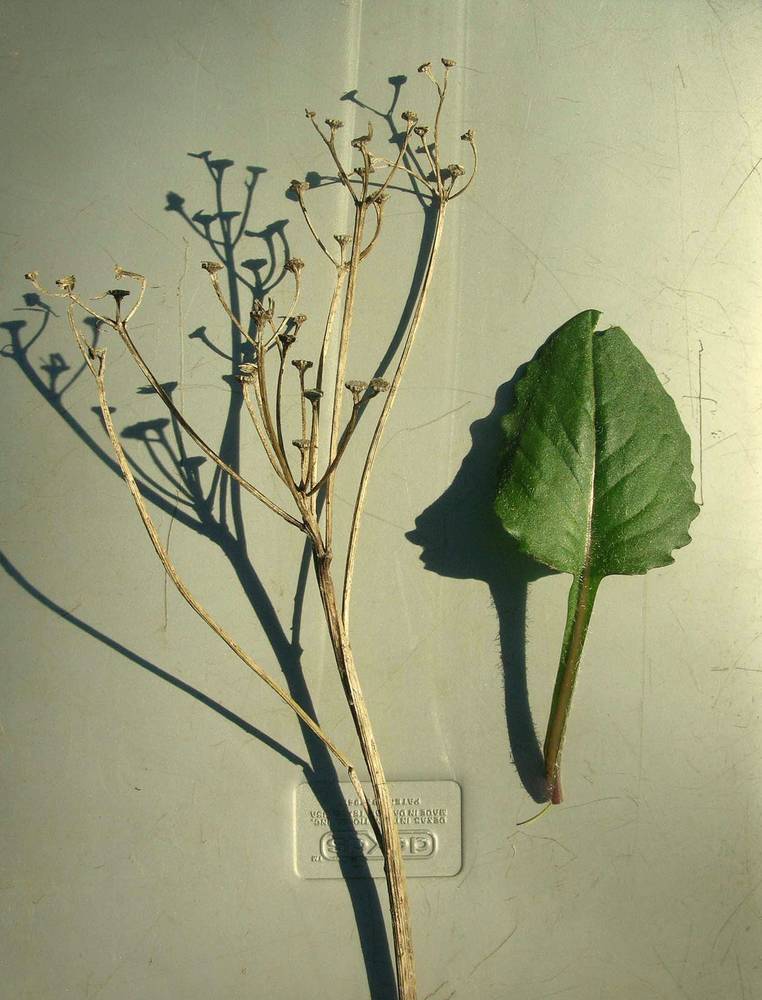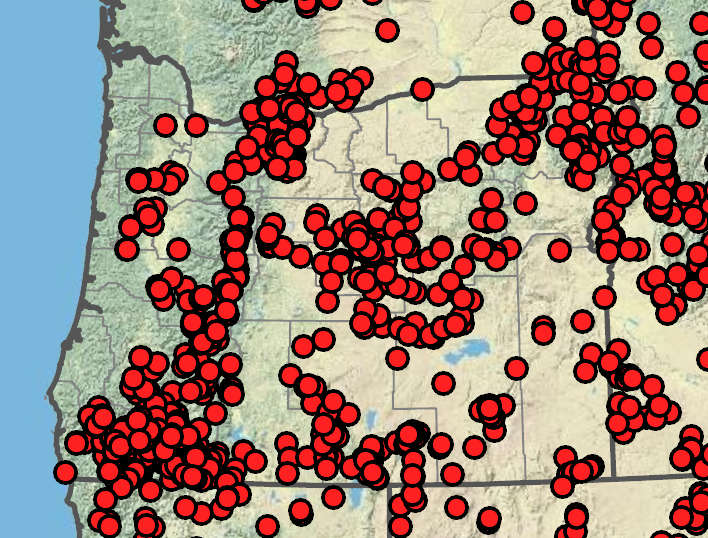Senecio integerrimus
Senecio crassulus
lambstongue ragwort, western groundsel
mountain meadow butterweed, thick-leaved groundsel
1, loosely arachnoid-tomentose, or villous, glabrate with age.
1–4, glabrous.
mostly basal;
cauline progressively reduced distally; ± petiolate;
basal and lower cauline elliptic, lanceolate, linear, oblanceolate, rounded-deltate, rarely suborbiculate, bases tapered or truncate to cordate;
margins entire or dentate;
distal becoming sessile and bract-like.
basal present at flowering;
cauline evenly distributed along stems; thick and fleshy, lanceolate to subelliptic, bases tapering;
margins dentate with callous denticles to subentire;
surfaces glabrous, sometimes with broadly winged petioles;
proximal often early deciduous; mid-cauline sometimes larger, sessile and weakly clasping;
distal smaller, sessile and clasping.
corymb-like arrays;
bracts 0 or inconspicuous.
corymb-like arrays;
bracts 2–4 mm, conspicuous.
urn-shaped.
broadly campanulate.
5, rarely 0;
rays 6–15(20) mm, yellow or white to pale yellow.
8 or 13;
rays 5–12 mm.
35–45.
55–65; deep golden to orange-yellow.
(8)13 or 21;
tips usually black, sometimes green.
(8)13 or 21, 5–9 mm, with black tips;
surfaces densely tomentose.
1–5+, inconspicuous, usually < 2 mm.
(1)3–6 linear to filiform bractlets; (1)2–6 mm, with or without black tips.
2.5–3 mm, usually glabrous, sometimes hairy along ribs.
2–2.5 mm, glabrous.
6–15(30+).
(1)4–12.
=40, 80.
=40.
Senecio integerrimus
Senecio crassulus
Western North America. 5 varieties; 3 varieties treated in Flora.
Wet to drying hillsides and meadows, open forests. Flowering May–Aug. 800–3000 m. BR, BW, Owy. ID, NV; northeast to MT, east to SD, southeast to NM. Native.
Debra Trock
Debra Trock
- Local floras:
BC,
CA,
OR,
WA
- Local Web sites:
CalFlora,
CalPhotos,
Flora NW,
PNW Herbaria,
Turner Photog.
WildflowerSearch
iNaturalist (observations)
USDA Plants Database
- LBJ Wildflower Center
- SEINet
- Plants of the World Online
- Encyclopedia of Life
- Wikipedia
- Google Image Search





